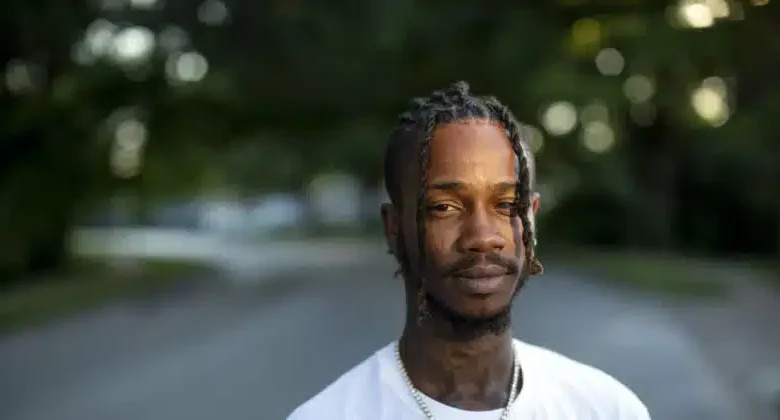Dorian Johnson, Key Witness to Michael Brown’s Death, Shot and Killed in Ferguson

Dorian Johnson, the friend who witnessed the fatal police shooting of Michael Brown that sparked nationwide protests in 2014, was shot and killed Sunday morning in Ferguson, Missouri, less than a mile from where Brown died eleven years ago.
The Shooting Incident
Ferguson Police confirmed that Johnson, 33, died from injuries sustained in a shooting that occurred around 8:30 a.m. Sunday on the 9600 block of Abaco Court. The location is approximately a 15-minute walk from Canfield Drive, where Ferguson officer Darren Wilson shot and killed Brown on August 9, 2014.
Police took one person into custody in connection with the shooting but released them within 24 hours without filing criminal charges, according to St. Louis County Prosecuting Attorney Melissa Price Smith.
“This appears to be a domestic incident involving a claim of self-defense that is being investigated,” Price Smith stated Monday, emphasizing that the investigation remains ongoing and her office continues consulting with Ferguson police about potential future charges.
No Police Involvement
Ferguson Police Public Information Officer Patricia Washington clarified that Johnson was not shot by law enforcement, dispelling early rumors about police involvement.
“There had been earlier rumors that this was an officer-involved shooting however that information is incorrect. No officers, Ferguson or otherwise, were involved in this incident other than to begin our investigation,” the police department stated.
Johnson’s Role in Ferguson Events
Johnson’s eyewitness account of Brown’s death became central to the narrative that fueled the Black Lives Matter movement and nationwide protests against police brutality. His description of events helped inspire the iconic “hands up, don’t shoot” protest chant that echoed across demonstrations throughout 2014.
According to Johnson’s testimony, he was with Brown when Wilson pulled up in his patrol car on Canfield Drive. After an initial confrontation through the driver’s side window—during which Brown was shot in the hand—both men ran from the scene. Johnson claimed that when Brown turned back toward Wilson, he had his hands raised in surrender before the fatal shots were fired.
Contested Testimony and Investigation
Johnson’s account of Brown’s final moments became a focal point of controversy during subsequent investigations. While his testimony contributed to the “hands up, don’t shoot” narrative, federal investigators found conflicting witness accounts about Brown’s exact actions before his death.
A Justice Department investigation revealed that witnesses “gave varying accounts of exactly what Brown was doing with his hands as he moved toward Wilson,” with some describing Brown balling up his fists or pulling up his pants rather than surrendering with raised hands.
Despite these disputed details, Johnson’s version of events became emblematic of broader concerns about police use of force against unarmed Black Americans.
Legal Aftermath and Litigation
Following Brown’s death, Johnson unsuccessfully sued Wilson, alleging illegal stop and excessive force. An appeals court dismissed the lawsuit in 2019. Brown’s family separately brought a wrongful-death lawsuit against Ferguson, reaching a settlement in 2017.
Wilson, who argued he shot Brown in self-defense as Brown charged toward him, was not indicted by a grand jury and faced no criminal charges. However, the Justice Department’s broader civil rights investigation concluded that Ferguson Police Department and the city’s municipal court engaged in a “pattern and practice” of discrimination against Black residents.
Ferguson’s Changes Since 2014
The events following Brown’s death led to significant changes in Ferguson’s police department. Current Police Chief Troy Doyle noted that the force now has roughly 50% African American representation, compared to fewer than five out of approximately 60 officers in 2014.
The department has implemented training programs on implicit bias and use of force as part of broader reforms stemming from federal oversight following the Justice Department’s civil rights findings.
Community Impact and Memory
Johnson remained connected to Ferguson and the Brown family, speaking at memorial events including the 10th anniversary of Brown’s death last year. Social media filled with posts mourning Johnson’s death on Sunday, reflecting his continued significance to those who knew him and the broader community affected by the 2014 events.
His death comes as Ferguson and the nation continue grappling with questions of police accountability and racial justice that his witness testimony helped bring to national attention over a decade ago.
Ongoing Investigation
While authorities have characterized the shooting as a domestic incident involving self-defense claims, the investigation remains active. The proximity of Johnson’s death to the site of Brown’s killing adds a somber element to a case that continues to resonate in discussions about police violence and civil rights.
Johnson’s death removes a key witness to one of the most significant police shootings in recent American history, ending a life that became inextricably linked to a moment that changed national conversations about race, policing, and justice.




